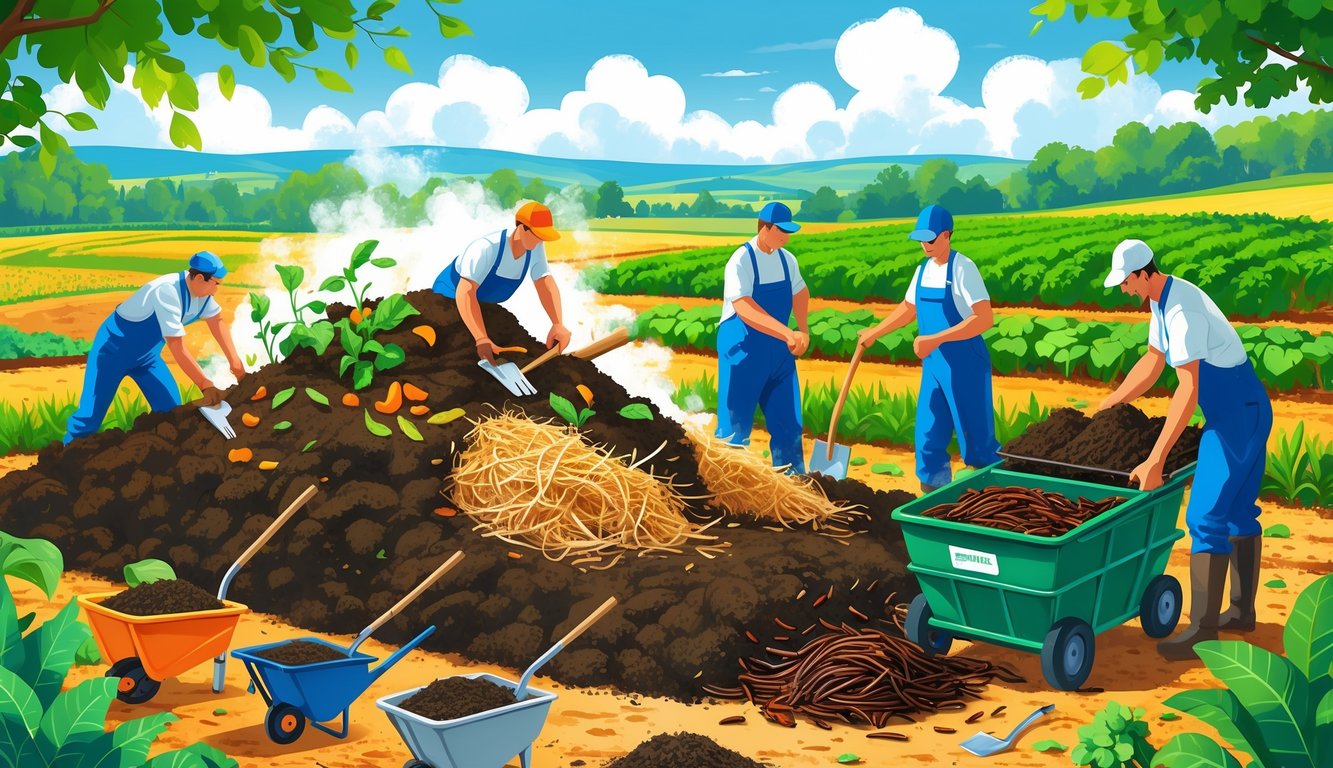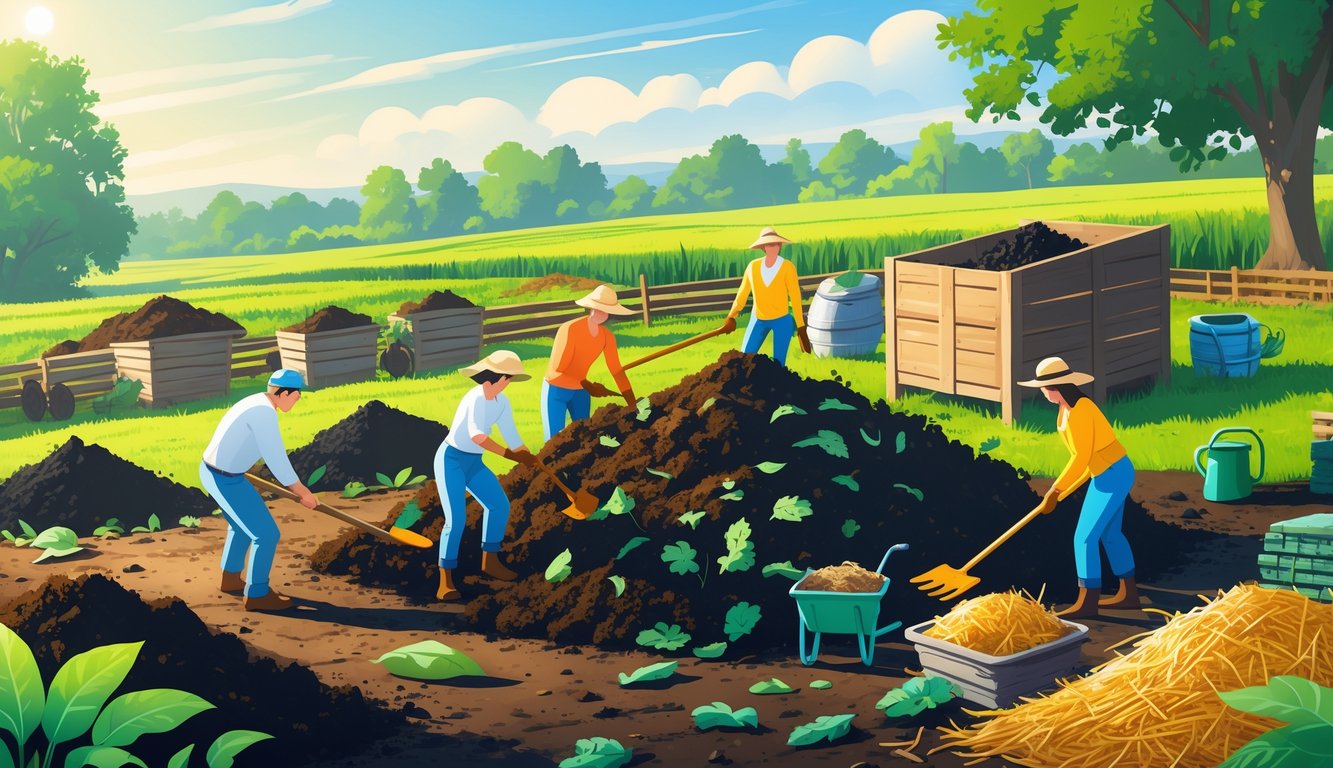
Mastering Vermicomposting and Worm Composting
You’d think tossing food scraps around would magically fix the garden, but then bags pile up, nothing breaks down, and suddenly everyone’s giving you side-eye. Worm composting, with these twitchy red wigglers, actually does something: less stink, faster breakdown, better stuff than the overpriced bags at the store. And then you’re that person handing out worms to everyone who mocked you last month.
The Role of Red Wigglers in Composting
So, I bought a box of “red wigglers”—Eisenia fetida, apparently the Beyoncé of the worm world—because every vermiculture guide is obsessed with them. Turns out, regular earthworms from the yard are useless for this. Red wigglers eat like maniacs: a pound of them demolishes three pounds of kitchen scraps a week.
They multiply like nobody’s business. I left a bin alone in the garage and suddenly, worm city. Their castings—those tiny black dots—are packed with nutrients and whatever else plants love. University extension people keep raving about them, and honestly, my green onions have never looked better. I see a compost pile without worms now and I just judge, can’t help it.
Setting Up a Worm Bin
First time, I grabbed a cheap plastic tote, skipped the drainage holes, and, wow, regret. You need holes, some kind of moisture control, and bedding that doesn’t turn into glue. Shredded cardboard, old newspaper, maybe some coconut coir—never those shiny magazine pages. Bedding should be damp-ish, not soaking. Scraps need to be mixed in or you’ll get flies and worms hiding in corners, which is as gross as it sounds.
Every “expert” yells about no citrus or meat, but onions and garlic slow worms down too, who knew? I keep a tiny fork for stirring. Bins like it not too hot, not too cold—my garage in winter? Worms basically went on strike. Feed them small amounts, don’t drown them, and after a month, it’s wild how fast everything turns into black gold. Here’s a list of tips if you want to avoid my mistakes. Don’t freak out if worms climb the walls at night; apparently, they sense weather or something. I still don’t get it.
Modern Techniques Worth Trying

Not gonna lie, most “modern” compost tricks are just recycled old news, but a couple actually impressed me. Chopping scraps tiny, no stink, no rodent circus, and somehow getting a pile to cook even when it’s freezing? That’s worth a look.
Bokashi Composting for Kitchen Scraps
Why do people still grind up banana peels in the sink when bokashi buckets exist? I dumped all my family’s scraps (meat, dairy, bones—yep) in there, and it never stank. This thing uses bran with “effective microbes” (whatever those are), and it’s so tidy even my cousin put one in her apartment. Some 2024 review said bokashi reduces kitchen waste by 35% in three weeks (here’s the source), and then you just bury the pickled mess or add it to your heap.
Tiny kitchen? Doesn’t matter, it’s dead quiet. But seriously, what do you do with bokashi juice? People say it’s good for hydroponics, but I haven’t met anyone who actually uses it. If you’re after quick results, it might be overkill, but nothing else I’ve tried handled so many “banned” scraps without attracting every fly in the neighborhood.
Aeration Systems and Tools
Remember when every YouTuber said flipping compost was “fun family time”? I nearly quit gardening. Now there’s static pipe setups and powered aerators—one called the Aeromixer turned my heap from reeking to sweet in under ten minutes a week. Supposedly, active oxygen cuts compost time by 60–80% compared to just letting it rot—here’s a breakdown.
Weirdly, I haven’t broken a pitchfork in two years. Used to snap one every season. Static tubes do clog if your bedding’s too wet, nobody warns you about that. Studies say more air means less stink—90% less, apparently. Still doesn’t stop my neighbor from calling my compost “mushroom city,” whatever that means. At least I can breathe near it now.
Managing Materials for Optimal Compost

Tried just tossing everything together once—eggshells, weeds, greasy pastries—and the pile turned into a moldy, sour soup. Who knew? Browns and greens aren’t just for show. After dumping two weeks of green clippings with no straw, my heap went swampy in three days flat.
What to Add and Avoid
Ever left meat or dairy in your pile? I have. Raccoons show up, and suddenly you’ve got a science experiment. Rick Carr at Rodale Institute says, “Compost happens—just give it time,” but he also says to skip persistent weeds, bread, or glossy paper to avoid drama.
Honestly, dry browns (dead leaves, straw, cardboard) need to outnumber the greens (kitchen scraps, grass, tea bags—I never know if the string counts as brown or green). Manure, sawdust from untreated wood, shredded paper—totally fair game. Don’t use newspaper with colored ink unless you enjoy picking plastic bits out of your garden. Farm Net Zero trials found weed seeds and diseases stick around if you don’t turn the pile or check temps—here’s some actual advice for when you’re tired of winging it.
Integrating Yard Waste and Coffee Grounds
People talk about coffee grounds like they’re magic. I dumped a whole bag in—pile heated up, then turned into a mudslide. PSU Extension says too much grass or grounds means slime. I learned the hard way. Grounds need more browns to stay fluffy. Old leaves or cardboard are the unsung heroes here.
Yard waste is a wild card. Thick stems or hedge trimmings? Shred them or they’ll outlast your patience. Wet spring, uncut sunflower stalks—those things mummified in my heap for half a year. But autumn leaves, rhubarb tops, dead veggie plants—absolute gold. Layer them, never let grass clippings mat unless you want a compost pancake. When in doubt, I double the browns and stop worrying about the carbon math. For actual mixing techniques that aren’t just me improvising, try this guide.